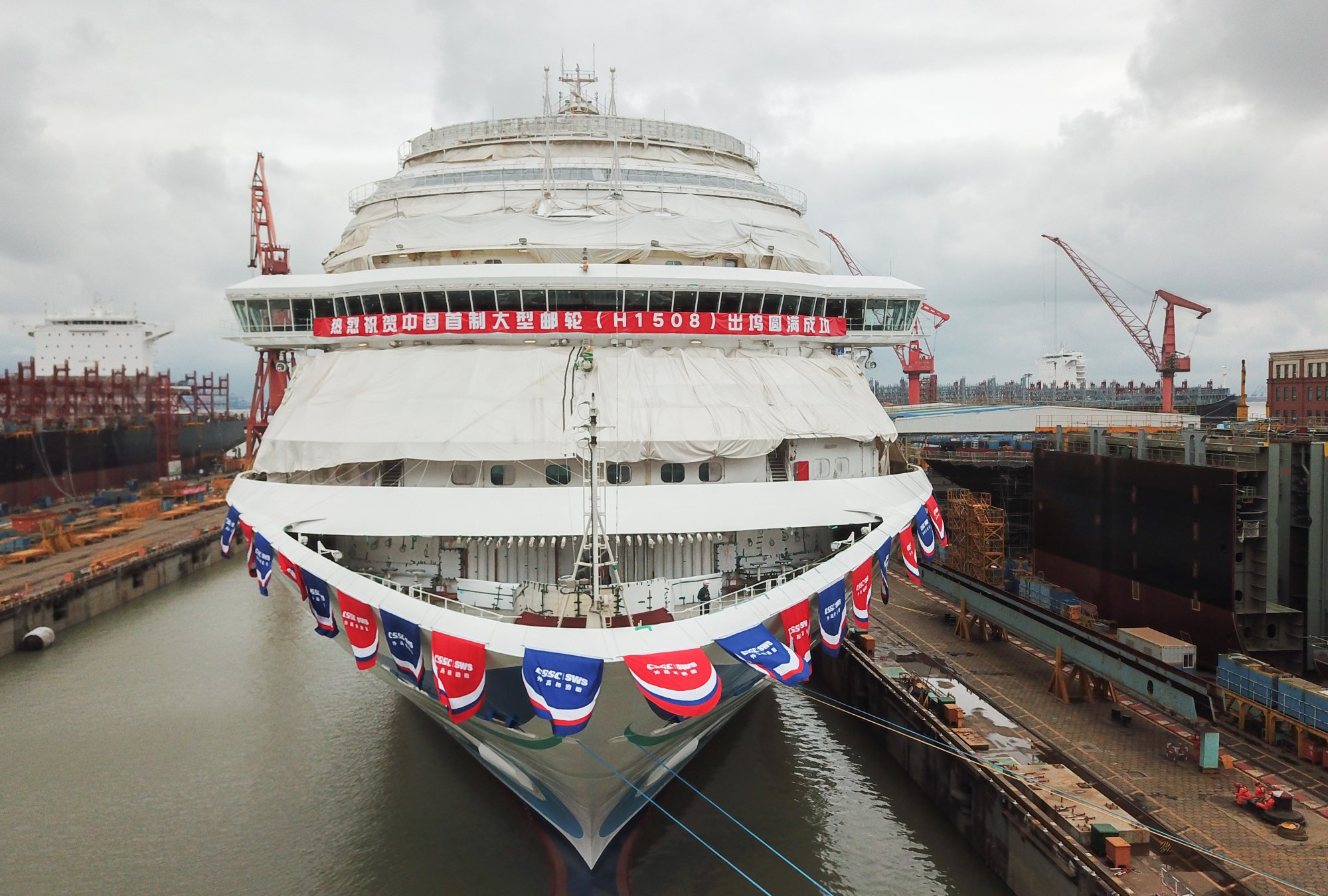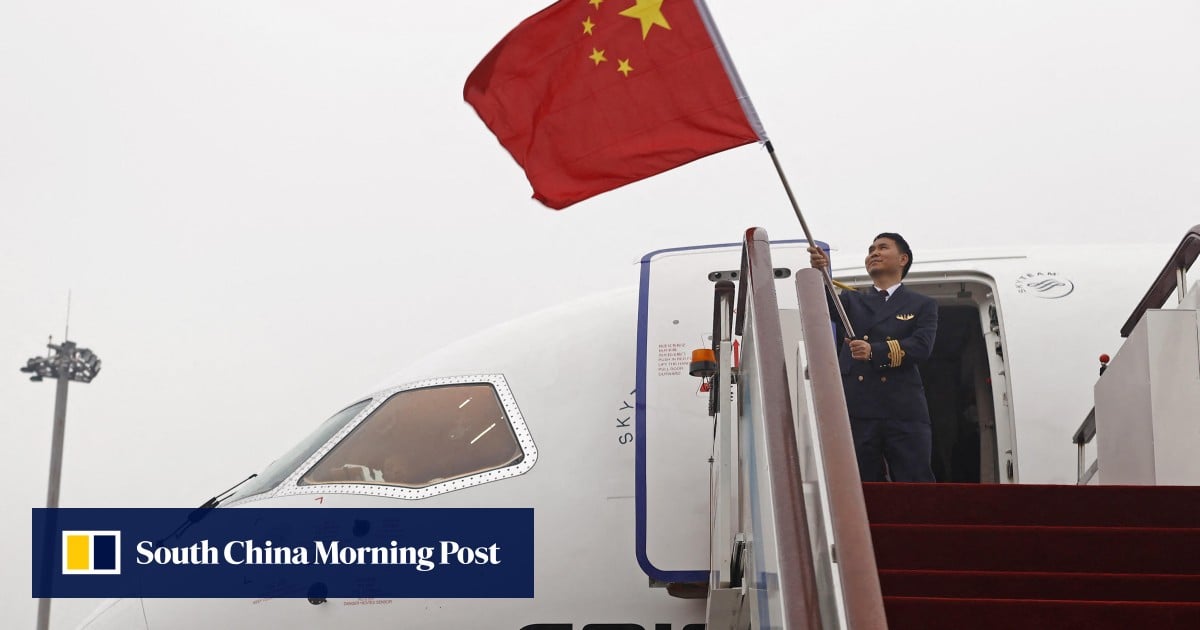beijingwalker
ELITE MEMBER

- Joined
- Nov 4, 2011
- Messages
- 65,191
- Reaction score
- -55
- Country
- Location
Global Impact: home-grown C919 passenger jet, first locally built large cruise ship highlight China’s advanced manufacturing progress
- Global Impact is a weekly curated newsletter featuring a news topic originating in China with a significant macro impact for our newsreaders around the world
- In this edition, we look back at the two major milestones and examines what they mean for China’s efforts to find another economic growth engine, and of course, compete with the United States
Published: 2:00pm, 19 Jun, 2023

In this edition of the Global Impact newsletter, we look back at the two major milestones and examines what they mean for China’s efforts to find another economic growth engine, and of course, compete with the United States.
In August 2008, China’s first bullet train started running between Beijing and Tianjin. Four months later, the country kicked off the development of its home-grown passenger jet, the C919.
It took three years to build the Beijing-Tianjin high-speed railway, but 15 for the first C919 to make its first commercial flight at the end of last month.
Just over a week later, on June 6, China’s first locally built large cruise ship, the Adora Magic City, left its dock in Shanghai.
Crossing off milestones one after another, Beijing has taken strides in advanced manufacturing as part of efforts to be more self-reliant in high-value-added industrial chains and to try to gain an upper hand in the tech war with the United States – a mission that, in Beijing’s view, it cannot afford to lose as it seeks a new engine to power its economic growth.
Being self-reliant, though, is not a new thing for China, and the narrow-body C919, built by the state-owned Commercial Aircraft Corporation of China (Comac), was not the country’s first effort to develop its own aircraft.
The four-engine, narrow-body Y-10 commercial jet made its first flight in 1980, but the dream to fly the country’s own commercial flight was grounded in 1985 due to complicated political and economic reasons.
It was also the year that Airbus entered the Chinese market, and it was not until the early 2000s that Beijing decided to resume the project.
Designed to compete with the Boeing 737 and the Airbus A320 family of single-aisle aircraft, the C919 completed its maiden commercial flight on May 28 from Shanghai to Beijing, one of the country’s busiest routes.
The second C919 is also likely to be delivered to China Eastern Airlines, which has initially put the first on the route between Shanghai and Chengdu, and domestic media reported it is expected to fly it on more routes in the future.
In contrast, Japan’s Mitsubishi Heavy Industries in February abandoned its decades-long efforts to build its home-grown passenger jet, citing technical defects and high costs.
For China, despite the national pride hailed by state media in self-sufficiency and stronger competitiveness in the industrial supply chain, the C919 and Adora Magic City are products of international cooperation.
The C919 is composed of more than 4 million parts, with key components such as the engine, avionics and control systems sourced from overseas, especially from the US. Some parts are subject to licences granted by the US Department of Commerce, and it may put production at risk if Washington tightens export controls against China.
More than 200 domestic companies and nearly 200,000 professionals are involved in the production and development of indigenous technology for the C919, while it also sources supplies from foreign partners and 16 joint ventures with overseas firms, Comac said.
With a unit price of 653 million yuan (US$91 million), C919 orders have surpassed 1,000, mostly from domestic buyers.
The huge market potential has raised expectations for a booming aircraft-production supply chain, and in particular, for increasing the proportion of domestic supplies.
Domestic research agencies said the C919 supply chain will inevitably lead to progress in new materials, aerospace technology and a talent pool at home.
The Adora Magic City is also following a similar pattern in production. The number of parts needed for the cruise liner is around five times that of the C919. Due to a lack of experience at home to meet the complicated and intricate requirements, most supplies for the ship needed to be imported.
Luxury cruise ships, together with liquefied natural gas vessels and aircraft carriers, are considered “the three pearls of the crown” in shipbuilding, and competition with South Korea is set to intensify as Beijing catches up with Seoul in the high-value shipbuilding market.
It took six years for Beijing to export bullet-train technology, and one decade to become globally competitive, but it may take longer for the C919 to substantially challenge the Boeing-Airbus duopoly.
Nevertheless, the C919 and Adora Magic City have marked China’s advanced manufacturing progress, as the nation continues to take steps towards boosting its self-reliance in critical industries.
60-Second Catch-up
China’s C919 passenger jet completes first commercial flight from Shanghai to BeijingExplainer: China’s C919: what is the home-grown passenger jet and can it compete with aviation giants Airbus, Boeing?
China’s first home-grown large cruise liner undocks in Shanghai in breakthrough for shipbuilding, high-end manufacturing
Explainer: What is China’s first home-grown large cruise liner, and why is it a breakthrough?
Infographic: How China built the world’s largest high-speed rail network – a visual explainer
Deep dives

Illustration: Victor Sanjinez
China’s cruise liner breakthrough marks crowning glory, but ambition to climb high-value chain faces challenges
- China’s first home-grown large cruise liner undocked in Shanghai this week in a breakthrough for the nation’s shipbuilding and high-end manufacturing ambitions
- Beijing is also eager to narrow the tech gap with global rivals such as South Korea
Luxury cruise ships, together with liquefied natural gas (LNG) vessels and aircraft carriers, have long been considered “the three pearls of the crown” as they represent the highest levels in vessels carrying passengers, cargo and military equipment.

Photo: Xinhua
China’s first home-built large cruise liner timeline 2006-23: shipbuilding breakthrough charters new waters
- China’s first home-grown large cruise liner, the 135,500-tonne Adora Magic City, left its dock in Shanghai on June 6 ahead of a series of sea trials
- After nearly four years of construction, it is expected to be delivered by the end of 2023 before entering operation next year, while a second liner is also being built
The 135,500-tonne Adora Magic City, built by a subsidiary of the state-owned China State Shipbuilding Corporation, will conduct sea trials in July and August before it is delivered by the end of 2023 ahead of entering operation next year.

Photo: Kyodo
China’s C919 debut could inspire aviation supply chain to take off, but self-sufficiency ‘difficult’
- China’s home-grown C919 passenger jet completed its first commercial flight from Shanghai to Beijing on Sunday after more than 14 years of development
- But key technologies, including the engine, avionics, control systems, communications and landing gear, were all imported despite the involvement of 200 Chinese firms
Sunday’s first commercial flight between Shanghai and Beijing has been seen as a critical step in China’s bid for technological self-sufficiency in the face of intensifying trade tensions with the United States.
Read more

Photo: Xinhua
Why did it take 15 years for China’s C919 to make its first commercial flight?
- The Commercial Aircraft Corporation of China (Comac) was formed in 2008 to develop the C919 narrow-body passenger jet
- The C919 was formally put into service with its maiden commercial flight in May 2023
But how did it take 15 years for the C919 to take the two-hour commercial flight from Shanghai to Beijing?
Read more

Photo: Xinhua
Vice-Premier Zhang Guoqing targets China’s manufacturing sector
- During inspection of major manufacturers in Shanghai, Zhang urged speedy value-adding and faster breakthroughs in bottleneck technologies
- Zhang is also top administrator for state-owned enterprises, top regulator of industrial safety and top coordinator of China’s disaster response and relief
During his inspection of major manufacturing companies in Shanghai this week, Zhang urged them to move up the value chain faster and speed up breakthroughs in key bottleneck technologies, state media reported on Tuesday.

China’s C919, large cruise liner underline China’s advanced manufacturing progress
In this edition of the Global Impact newsletter, we look back at the two major milestones and examines what they mean for China’s efforts to find another economic growth engine, and of course, compete with the United States.
